A growing number of economic and community development practitioners are concerned with how to “make wealth stick.”
Classic examples of wealth not “sticking” surface all the time in the hallway conversations about development. In one common case, rural communities lament when they create and offer their high school graduates college scholarships to far-away universities; this builds the youth’s individual capital, but if the young people never return, that capital leaves the region. In another, regions complain when generous public incentives are awarded to large firms to locate there, but the firm is not locally owned, participates little in community life, only offers its lowest-wage jobs to locals, or moves away when a better location deal lures them to a different region.
In short, wealth-building is not just about increasing wealth—that is, the quantity and quality of your stocks of eight capitals. It must include making sure those stocks of capital stay in place and that people, firms, organizations and communities in the region can make decisions about how they are used and invested in the future. In WealthWorks, we call this essential ingredient of wealth building regional ownership and control.
The more that people, firms or agencies outside the region own or have decision-making control over the capitals in your region, the less you can marshal those capitals to do what makes sense for you. By increasing your local ownership and control of the region’s wealth, you can capture more return on your investments. More benefits will flow to people, places and firms in the region, and can be reinvested to generate more local benefits in the future.

Regional ownership and control can take many forms. However, it is the local or regional aspect of ownership and control that marks it as a true wealth-building strategy.
In WealthWorks, regional ownership and control can take many forms. No one type of ownership or control is best. Instead, it is the local or regional aspect of ownership and control that marks it as a true wealth-building strategy.
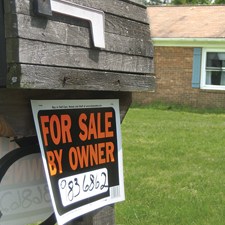
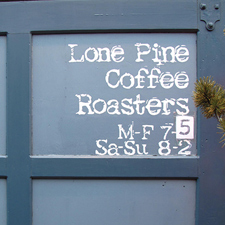
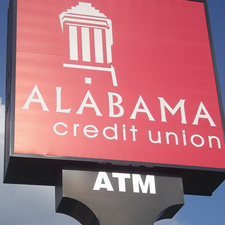
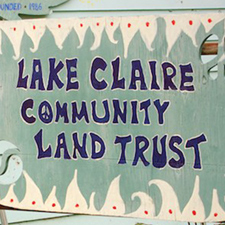
Let’s define what regional ownership and control mean:
There are many examples of how to structure ownership and control, but there is also the question of: Exactly who or what in the region is the local owner or has some level of control or influence? Generally the ownership or control “belongs” to one of four types of local actors.
Both private and public, and both individual and collective, ownership are critical to a healthy regional economy. Encouraging a mix of local ownership types and structures in the region allows more stakeholders to participate in making decisions about local assets. The point in WealthWorks is simply to think systematically about how you might increase local ownership and control of wealth—whether public or private, shared or individual—in any and every economic or community development activity you undertake.
Local ownership and control makes for healthier, more resilient regional economies. And it’s a great opportunity to be creative, or as some in the Black Belt of Alabama say, to “take what we have to make what we need.” Innovative strategies for expanding ownership and control are advancing every day. Consider these two cases:
One solution: The partners agree to a recreation easement, a binding contract stipulating that the visitor’s bureau will hold long-term development rights along the bike trail, while property ownership remains in the hands of individual partners. The bike trail is developed, tourist dollars are attracted, local residents start cycling, and benefits are captured and reinvested locally.
One solution: The governments bring green building experts into the region to work intentionally with the local community college to design an immediate training opportunity and a longer term career pathway in energy retrofitting. Over time, local residents are able to develop green building skills and businesses. The government can rely on local knowledge in the future, and residents increase their income through new local employment and business opportunities.
Even better, increasing local ownership and control of wealth typically appeals to common sense. This makes it easier to talk about it as a goal. And it makes it easier to get people to work together to devise creative ways to go about it. People almost intuitively understand these things about ownership and control:
Expanding local ownership and control of assets is a significant wealth-building opportunity. So, in WealthWorks, when striving to make more wealth stick through ownership and control, you start with the wealth you have in your stocks of the eight capitals.
Then, as you work together to explore and act on market opportunities, you start thinking about how to develop strategies, investments and connections so that more of the wealth you produce becomes owned or controlled in the region.
Ownership and control strategies range from clear legal mechanisms of ownership—for assets like land or buildings or patents—to more abstract strategies that build intellectual and social capital. As mentioned before, by consistently thinking “ownership and control of wealth,” economic and community developers get creative and stretch beyond their typical approaches. The table below provides some illustrations.
The examples in this section show that there are lots of options for increasing regional ownership and control—some well-known, and some less so. But all of them illustrate that more wealth can “stick.” And when it does, people in the region benefit—and investments continue to flow, accrue and generate future benefits.
In short, WealthWorks makes expanding local ownership and control an essential component of wealth building because it makes for healthier, more resilient regional economies.
Look for the highlighted ownership and control aspect in each of these examples. Can you think of another example that would fit each category?
Example: Ownership strategy
Strengthen or start local entrepreneurship programs to develop practical skills and networks “owned” by individuals that could lead them to jobs or start-ups in the future.
Example: Control strategy
Institute a leadership program that trains people to run for and serve in elected office.
Example: Ownership strategy
Provide technical and legal assistance from local college to local firms to apply for and receive patents on new products and processes.
Example: Control strategy
Form a business-led tourism group in the region that develops a regional “brand” (with locally set restrictions on use), a set of historic trails, and a “buy local” strategy that attracts more tourists who stay longer and purchase more local products.
Example: Ownership strategy
Convene a group of local landowners to set up a wind farm cooperative—rather than simply individually leasing their land to outside wind energy companies.
Example: Control strategy
Organize local stakeholders into a new residents’ association that negotiates a community benefits agreement with the major players in a large development deal in the region.
Example: Ownership strategy
Establish a community foundation that attracts local donors to create pooled funds that focus on local causes. Set up a community land trust that ensures affordable housing availability over the long term.
Example: Control strategy
Create a participatory budget process that invites all residents to contribute ideas and vote for priorities in the use of jurisdiction’s resources.

Specialties: Local Food, Placemaking, Renewable Energy
States served: Minnesota
Additional details: Enhancing the vitality and quality of life in Cass, Crow Wing, Morrison, Todd and Wadena counties is the mission of Region Five Development Commission. Resiliency, inclusion and collaboration are guiding concepts in achieving mutually shared goals that continue to evolve with local municipalities, state, federal, philanthropic, non-profit and social advocacy agencies.
Contact: Cheryal Lee Hills, 218-894-3233
Mailing address:
200 1st Street NE, Suite 2
Staples, MN 56479
Alternative contact: Dawn Espe, 218-894-3233
Website: http://www.regionfive.org

Specialties: Food, Forestry/wood products, Tourism
States served: Idaho, Oregon, Washington
Additional details: RDI was formed in 1991 in response to the timber industry crisis facing the Pacific Northwest. Our nationally recognized programs and services help communities help themselves with effective and results-oriented training and resources necessary for individuals living in rural communities to build and sustain a better future in their communities. Our work is based upon our genuine commitment to build rural capacity through Leadership Development programs and strengthen Rural Economic Vitality through moving capacity into action.
Contact: Amy Hause, (541) 255-9590
Mailing address:
Rural Development Initiatives
91017 S Willamette St
Coburg, Oregon 97408
Alternative contact: Heidi Khokhar, (541) 684-9077 ext. 7011
Website: http://www.rdiinc.org/

Specialties: Food, Forestry/wood products, Housing, Tourism
States served: Alaska, Arizona, California, Colorado, Hawaii, Idaho, Montana, Nevada, New Mexico, Oregon, Utah, Washington, Wyoming
Region details: RCAC serves 13 western states including: Alaska, Arizona, California, Colorado, Hawaii, Idaho, Montana, Nevada, New Mexico, Oregon, Utah, Washington, and Wyoming. We also work in the U.S. territories of the Marianas Islands, Marshall Islands and the U.S. Virgin Islands.
Additional details: RCAC Value Chains, economic development and Wealth Works are embedded in RCAC’s Building Rural Economies program. With over 10 years of experience in these arenas we technically assist communities who wish to envision and create their future.
Contact:
Carol Cohen, 435-671-7068
Mailing address:
3120 Freeboard Drive
Suite 201
West Sacramento, CA 95691
Alternative contact: Ellen Drew, (575) 421-0261
Website: http://www.rcac.org/community-economic-development/wealthworks-west
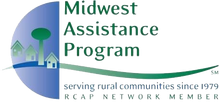
Specialties: Energy efficiency
States served: Iowa, Kansas, Minnesota, Missouri, Montana, Nebraska, North Dakota, South Dakota, Wyoming
Additional details: Midwest Assistance Program (MAP) has been helping communities and tribal nations find solutions to their infrastructure and development needs through information, resource management, expertise, and technical assistance since 1979.
Contact: Chris Fierrros, 660-562-2575
Mailing address:
303 N Market Street, Suite 2
Maryville, MO 64468
Website: http://www.map-inc.org

Specialties: Bio-energy, Food
States served: Arkansas, Louisiana, Mississippi, Oklahoma, Tennessee, Texas
Region details: Communities Unlimited serves seven southern states: Arkansas, Mississippi, Tennessee. Texas, Oklahoma, Louisiana and Alabama. This is an area that includes 60% of this country’s persistently poor counties, including large percentages of African Americans, Hispanics, and Native Americans.
Additional details: Communities Unlimited has 40 years of community economic development experience in the South. It seeks to move rural and under-resourced places toward prosperity by identifying a community’s assets and the market demand for the products or services created from those. We then build value chain collaboratives based on WealthWorks principles to create new economic opportunities. Since 2013, we are demonstrating the success of this approach through a farm-to-fuel value chain in the Arkansas Delta.
Primary Contact:
Martha Claire Bullen, 479-443-2700
Alternative Contact:
Ines Polonius
Mailing address:
3 East Colt Square Drive
Fayetteville, AR 72703
Alternative contact: Debbie Luther, 870-509-1331
Website: https://www.communitiesu.org
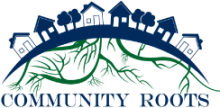
Specialties: Arts, Food, Forestry/wood products, Tourism
States served: Connecticut, Maine, Massachusetts, New Hampshire, New York, Rhode Island, Vermont
Additional details: Community Roots, LLC is a Vermont firm specializing in rural community and economic development consulting. Melissa Levy of Community Roots, LLC has been working with the WealthWorks framework over the past several years. She’s been a trainer, coach, workshop facilitator, and presenter in the WealthWorks community.
Contact: Melissa Levy, 802-318-1720
Location: Hinesburg, VT

Specialties: Arts, Energy efficiency, Food, Forestry/wood products, Manufacturing, Tourism
States served: Kentucky, North Carolina, Ohio, Tennessee, Virginia, West Virginia
Additional details: The Central Appalachian Network is a regional network of six anchor organizations that pursue collective sustainable economic development strategies across the Appalachian region of Ohio, West Virginia, Kentucky, Virginia, and Tennessee. CAN builds regional partnerships and also works deeply at the sub-regional level around sectors and opportunities including local food value chains, forestry, new energy, small business development, social enterprise, recycling/upcycling, implementation-focused research, advocacy, and organizational capacity-building. CAN’s members are Appalachian Center for Economic Networks (ACEnet), Appalachian Sustainable Development (ASD), Coalfield Development Corporation, Community Farm Alliance (CFA), Mountain Association for Community Economic Development (MACED), Natural Capital Investment Fund (NCIF), and Rural Action.
Contact: Leslie Schaller, 740-592-3854
Mailing address:
1456 C Patton Avenue
Asheville, NC 28806
Website: https://www.cannetwork.org